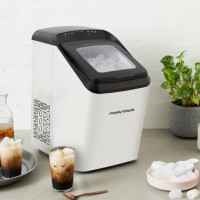When women undertake an IVF cycle, the aim is to retrieve as many good-quality eggs as possible in order to optimise the chance of a successful pregnancy.
The theory behind this is that IVF can be a physically and emotionally challenging process and doctors do not want to put patients through excessive IVF cycles if they can help it. The facts are also that not every stimulated follicle will contain an egg and not every egg will fertilise. Furthermore, not every egg that fertilises will go on to form a good-quality embryo.
Why not transfer all embryos?
One IVF cycle may result in one good-quality embryo or several good-quality embryos.
However, transferring all the good-quality embryos at once can result in two or more implanting and hence a multiple birth, which places the mother and baby at a significantly greater risk.
The standard now is to transfer only one embryo, and in special cases two.
So what happens with the spare embryos? The answer is to freeze them so if the first embryo transfer fails, the patient has another chance at pregnancy success without having to go through a full IVF cycle.
Following the fresh embryo transfer, the remaining embryos are checked to see if they are suitable for vitrification (rapid freezing).
To be suitable, the embryos must be of similar quality to the embryo transferred and not show any signs of abnormal development or fragmentation (cell breakdown).
How are embryos frozen?
Vitrification is a fast cryopreservation technique that is 7,000 times faster than slow freezing and has resulted in a dramatic increase in pregnancy rates due to the excellent quality of the embryos when thawed.
The blastocysts (embryos) are suspended in a drop of fluid on a tool with a tiny hook on the end. The droplet is lowered onto a metal block that has been cooled by liquid nitrogen, where it hardens into a glass-like bead.
Vitrification greatly reduces the risk of rupturing or damage to the embryo as there is minimal chance for ice crystals to form within the cell.
A typical embryo vitrification protocol is complete in about 10 minutes. The frozen embryos are then stored individually in a labelled cane in a liquid nitrogen dewar (storage vessel).
How are embryos thawed and used?
The process for thawing an embryo is very simple and involves removing the individual blastocyst from liquid nitrogen and replacing the cryoprotectant with water. This takes about 15 minutes.
Preparation for a frozen embryo transfer (FET) is a lot easier than a fresh embryo transfer as it does not involve any stimulation of the ovaries. An FET is all about timing it right so it takes place at the correct stage in your cycle. The doctor will undertake a baseline check of your uterine lining at the start of the cycle, and check it again a few days before transfer, to ensure it is in optimum condition. The actual embryo transfer procedure on the day then replicates a fresh transfer and does not require sedation or medication.
What happens to spare embryos?
Embryos can be stored frozen indefinitely; however, in Australia there may be a time limit of 5 years imposed, depending on which state you live in, so please check with your local CFC unit. An annual fee is charged to store the embryos.
One of the benefits of frozen embryos is that they do not age. For example, if you freeze an embryo at the age of 30 and decide to thaw and use it at age 35, the cell structure and quality of the embryo remain as they were when you were 30 years old.
Another option is donate your spare embryos to others in need of one.
To learn more about frozen embryos, please read our Vitrification Fact Sheet.
Have you been through IVF? Do you have anything to share with others that might be considering it? Please share in the comments below.























6:42 pm
10:12 pm
5:29 pm
8:16 pm
6:13 pm
8:32 am
10:39 am
9:59 am
-

-
-
mom94125 replied
- 17 Oct 2015 , 2:54 pm
Reply9:42 am
8:46 pm
9:40 am
11:24 pm
9:20 pm
9:08 pm
7:17 pm
2:54 pm
2:49 pm
2:26 pm
2:18 pm
1:23 pm
- 1
- 2
- »
Post a commentTo post a review/comment please join us or login so we can allocate your points.